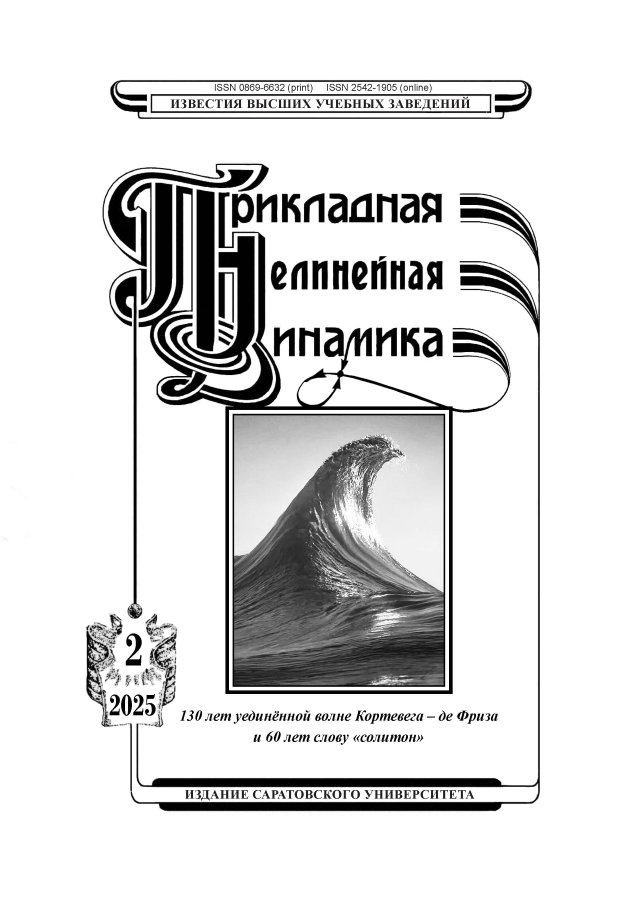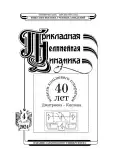Том 32, № 4 (2024)
От редактора
Сорок лет модели кольцевого генератора Дмитриева-Кислова
Аннотация
 423-427
423-427


Прикладные задачи нелинейной теории колебаний и волн
Нелинейные режимы распространения спиновых волн в волноводе c одномерным массивом отверстий
Аннотация
 428-438
428-438


Новое в прикладной физике
Поляризационные и CGR бинарные отображения как идентификаторы нуклеотидных последовательностей в биоинформатике
Аннотация
 439-459
439-459


Нелинейная динамика и нейронаука
Искусственная нейронная сеть с динамической моделью синапса
Аннотация
 460-471
460-471


Математическая модель управления нейропластичностью мозга при нейробиоуправлении
Аннотация
 472-491
472-491


Эффективность сверточных нейронных сетей различной архитектуры для задачи диагностики депрессии по данным ЭЭГ
Аннотация
 492-510
492-510


Исследование электрической активности мозга в рамках концепции координации ритмических процессов
Аннотация
 511-520
511-520


Нелинейные волны. Солитоны. Автоволны. Самоорганизация
Уединенные волны деформации в двух коаксиальных оболочках из материала с комбинированной нелинейностью, образующих стенки каналов кольцевого и круглого сечения, заполненных вязкой жидкостью
Аннотация
Цель работы состоит в построении системы нелинейных эволюционных уравнений для двух соосных цилиндрических оболочек, содержащих вязкую жидкость между ними и во внутренней оболочке, а также в численном моделировании процессов распространения нелинейных уединенных продольных волн деформации в данных оболочках. Рассмотрен случай, когда для материала оболочек закон связи напряжений и деформаций имеет жесткую комбинированную нелинейность в виде степенной функции с дробным показателем и квадратичной функции. Методы. Для постановки задачи гидроупругости оболочек используется Лагранжево-Эйлеровый подход записи уравнений динамики и краевых условий. Для анализа сформулированной задачи применен метод двухмасштабных разложений. В результате асимптотического анализа получена система двух эволюционных уравнений, которые представляют собой обобщенные уравнения Кортевега– де Вриза–Шамеля, и показано, что в общем случае система требует численного исследования. Для дискретизации системы эволюционных уравнений предложена новая разностная схема, полученная с использованием техники базисов Грёбнера. Результаты. Найдено точное решение системы эволюционных уравнений для частного случая отсутствия жидкости во внутренней оболочке. Численное моделирование показало, что при отсутствии жидкости во внутренней оболочке уединенные волны деформации имеют сверхзвуковую скорость. Кроме того, для указанного случая установлено, что волны деформации в оболочках сохраняют свою скорость и амплитуду после взаимодействия, то есть представляют собой солитоны. С другой стороны, расчеты показали, что при наличии вязкой жидкости во внутренней оболочке наблюдается затухание солитонов деформации, а скорость их распространения становится дозвуковой.
 521-540
521-540


Наука – образованию. Методические заметки. История. Personalia
Определение понятия информации в области компьютерных наук
Аннотация
 541-562
541-562












